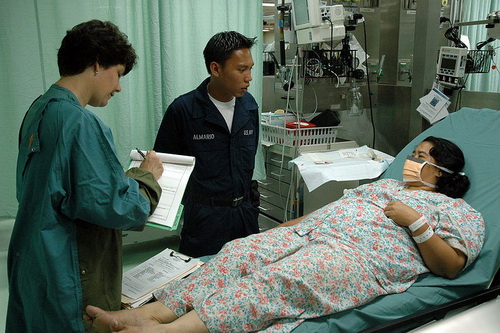
What is a vaginal yeast infection?
Vaginal yeast infection is a common type of fungal infection that causes inflammation of the vulva and vagina. About 75% of all women experience this type of vaginitis at some point in their lives, and about half of these women suffer from at least two episodes of yeast infection in their lifetime. Yeast is a common microorganism that thrives on various surfaces of the body, including the skin, the mouth, and the vagina. It usually does not cause any harm to the body because its growth is balanced by the presence of other "good" bacteria. However, there are certain conditions that allow yeast to grow in large numbers, enough to cause an infection, which results in inflammation. Although it is often not a serious condition, vaginal yeast infection can be very irritating and sometimes even embarrassing.
- Important notification about information and brand names used in this slideshow!
- Photo courtesy of U.S. Navy photo by Photographer’s Mate 1st Class Michael R. McCormick by Wikimedia Commons : commons.wikimedia.org/wiki/File:US_Navy_060529-N-3931M-031_Navy_Hospital_Corpsman_Mark_Almario_translates_while_Mary_Herlihy,_an_obstetri
- women.webmd.com/tc/vaginal-yeast-infections-topic-overview
- http://www.mayoclinic.com/health/yeast-infection/DS01182
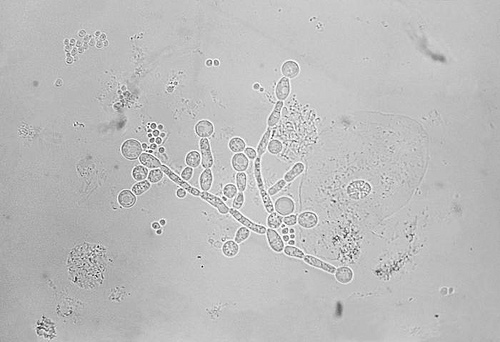
Causes of vaginal yeast infection
Vaginal yeast infections are often caused by the uncontrolled growth of fungi called Candida albicans, microorganisms that are usually found in small numbers in the vagina and other body surfaces. These fungi normally coexist with other bacteria such as Lactobacillus acidophilus, which are considered as “good” bacteria, since they help maintain the balance of microorganisms in the body. The good bacteria produce acids, which normally discourage the overgrowth of harmful microorganisms such as Candida. However, some conditions, such as hormonal changes or lowered body resistance, can upset this balance, causing the destruction of good bacteria and the proliferation of the harmful bacteria, viruses, and fungi, leading to infection and inflammation. This state of imbalance may be temporary, and once resolved, re-growth of good bacteria may restore the acidic environment in the vagina, leading to disappearance of symptoms.

Signs and symptoms
Women who experience intense itching, burning pain, and white vaginal discharge are most likely to be having a vaginal yeast infection. The discharge is characteristically non-odorous and looks like thick cottage cheese. They may also feel sore in their red and swollen vaginal area. Symptoms are usually mild to moderate. However, with severe infection, women may also experience pain during urination as urine touches their inflamed skin and pain during sexual intercourse. In some women, mild symptoms disappear around the time of menstruation. Mild symptoms may also disappear with home remedies or even without treatment. However, in those who experience recurrent infections, symptoms may be more severe and difficult to treat.
- Important notification about information and brand names used in this slideshow!
- Photo courtesy of Maria Moreno by Flickr : www.flickr.com/photos/ganessas/461234311/
- http://www.mayoclinic.com/health/yeast-infection/DS01182/DSECTION=symptoms http://women.webmd.com/tc/vaginal-yeast-infections-what-happens
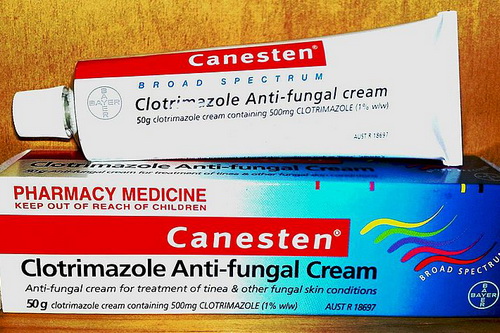
Using OTC medicines, yes or no?
Yes, women may safely use over-the counter (OTC) medicines to treat vaginal yeast infection, either using oral medications or topical preparations containing antifungal drugs, as long as they are sure of their condition. However, they must consult a doctor if it is the first time for them to experience symptoms of vaginal infection to make sure that they do have a fungal infection, and not some other type of infection or disease. Pregnant women, those with recurrent infections and others who may be experiencing a complicated infection are also advised to seek medical advice before using OTC medications for yeast infection. Some women who use OTC preparations for vaginal yeast infection do not really have the disease but may be suffering from another sexually transmitted disease (STD), resulting in non-treatment of the STD.
- Important notification about information and brand names used in this slideshow!
- Photo courtesy of Editor182 by Wikimedia Commons : en.wikipedia.org/wiki/File:Canesten.jpg
- womenshealth.about.com/cs/yeastinfections/a/getridofyeastin_2.htm

Risk factors
Some factors increase a woman's risk of developing vaginal yeast infection. These risk factors include increased estrogen levels associated with pregnancy, intake of birth-control pills or estrogen hormone therapy. The use of broad-spectrum antibiotics to treat other infections also kills the good bacteria, which promotes overgrowth of fungi. Women who have uncontrolled diabetes or those who have lowered immunity due to HIV or steroid intake have an increased likelihood of developing fungal infection. These conditions may result in reduced vaginal acidity, which encourages the growth of fungi, or reduced resistance to infection. Other risk factors that have been found to be associated with vaginal yeast infection include obesity, stress, lack of sleep, and hormonal changes related to the menstrual cycle. Certain personal habits such as wearing tight undergarments or tight-fitting pants, frequent douching, and using feminine sprays also increase one's likelihood of yeast infection.
- Important notification about information and brand names used in this slideshow!
- Photo courtesy of Sean and Lauren by Flickr : www.flickr.com/photos/seanandlauren/6157453876/
- www.mayoclinic.com/health/yeast-infection/DS01182/DSECTION=risk-factors
- http://womenshealth.gov/publications/our-publications/fact-sheet/vaginal-yeast-infections.cfm#a
- http://women.webmd.com/tc/vaginal-yeast-infections-cause

How is it treated?
Simple, uncomplicated cases of vaginal yeast infection are often easy to treat. A doctor may prescribe a single dose of an antifungal medication called fluconazole (Diflucan), which is taken by mouth. Alternatively, the doctor may prescribe a short-course topical therapy using an antifungal ointment, cream, suppository or vaginal tablet, which can effectively clear the yeast infection. These are azole drugs that include clotrimazole (Gyne-Lotrimin), butoconazole (Gynazole-1), terconazole (Terazol 3), and miconazole (Monistat 3). They may be used as a one-time treatment or as a 1 to 3-day regimen. Care must be taken when applying the suppository into the vagina to make sure it does not fall off. Side effects include vaginal irritation and slight burning sensation.
- Important notification about information and brand names used in this slideshow!
- Photo courtesy of U.S. Navy photo by Mass Communication Specialist 2nd Class Gary Granger Jr. by Wikimedia Commons : commons.wikimedia.org/wiki/File:US_Navy_110727-N-YR391-005_Lt._Cmdr._Jennifer_Freeman,_an_Obstetrics-Gynecology_physician_at_Naval_
- www.mayoclinic.com/health/yeast-infection/DS01182/DSECTION=treatments-and-drugs
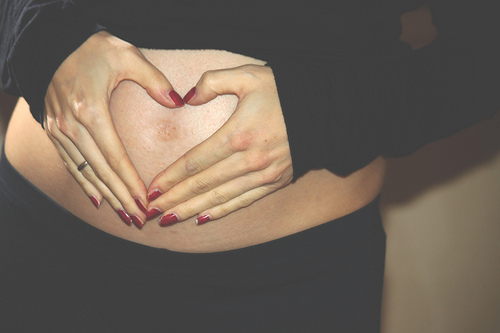
How can a yeast infection be treated if I am pregnant?
Vaginal yeast infection is common during pregnancy and it is most likely related to high estrogen levels during this period. Although the condition does not endanger pregnancy, it can cause disturbing symptoms. Women who experience symptoms of vaginal inflammation must consult their doctor to get proper evaluation and treatment. Aside from yeast infection, they may have other conditions such as bacterial vaginosis or STD that could complicate their pregnancy if not properly treated. Pregnant women are advised against using nonprescription or OTC medicines for yeast infection without first consulting their physicians. Oral medications are not usually recommended for pregnant women. Doctors recommend using vaginal creams or suppositories containing antifungals such as miconazole (Monistat), clotrimazole (Gyne-Lotrimin), butoconazole (Femstat), and terconazole (Terazol). Furthermore, yeast infection that occurs during pregnancy may take longer than usual to treat, and the treatment regimen may be extended to seven days.
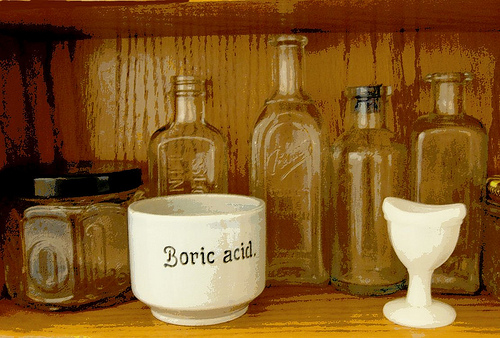
Alternative therapies for yeast infection
If you are tired of using the same treatments for recurrent vaginal yeast infection, you may want to try alternative therapies to reduce your symptoms. Although many people swear by them, more scientific evidence is needed to prove their effectiveness. One alternative therapy for vaginal yeast infection that does not respond to conventional treatments is the use of boric acid in the form of vaginal suppositories. Boric acid is used to treat uncommon strains of yeast and strains that have become resistant to common antifungal medications. However, it can irritate the skin and it may be toxic when accidentally ingested by children. Anecdotal reports suggest that eating yogurt that contains lactobacilli or applying it vaginally is effective in reducing yeast overgrowth. Other home remedies include the use of water and vinegar douche as well as garlic suppositories.
- Important notification about information and brand names used in this slideshow!
- Photo courtesy of janaree nore by Flickr : www.flickr.com/photos/zama_ree_do/6583627279/
- www.mayoclinic.com/health/yeast-infection/DS01182/DSECTION=alternative-medicine
- http://www.ehow.com/about_4795713_alternative-treatments-yeast-infections.html

Can yeast infection be transmited sexually?
Vaginal yeast infection is not sexually transmitted, although the fungus may be transmitted through oral to genital contact. However, it is estimated that 12-15% of men experience itching and rashes on their penis after having unprotected sex with a woman who has yeast infection. Some also believe that lesbians may have an increased risk of spreading the infection to their partner. Other experts agree that having unprotected sex with someone who has a yeast infection may cause one to get more than the normal amount of yeast in the vagina but it is likely that symptoms only appear because of other risk factors involved.
- Important notification about information and brand names used in this slideshow!
- Photo courtesy of Jasmine Bailey by Flickr : www.flickr.com/photos/sensitive-eyes/7464237922/
- www.mayoclinic.com/health/yeast-infection/DS01182
- http://womenshealth.gov/publications/our-publications/fact-sheet/vaginal-yeast-infections.cfm#g
- http://women.webmd.com/tc/vaginal-yeast-infections-what-increases-your-risk

Can vaginal yeast infections be prevented?
Vaginal yeast infection may be prevented by improving one's health habits, especially those concerning personal hygiene. You must avoid wearing tight underwear, pantyhose or pants, which cause moisture retention in the vaginal area and encourages fungal overgrowth. You must also avoid practices that alter the normal levels of acidity (pH) in the vagina, such as frequent douching, using tampons, scented feminine washes or sprays, using hot tubs, or not taking off swim suits or exercise clothes immediately after use. Proper genital hygiene is recommended to prevent fungal infection, as well avoiding frequent use of antibiotics, birth control pills, and steroid medications, which tend to reduce your resistance to fungal infection. In addition, a well-balanced diet and adequate control of blood sugar levels reduces your likelihood of acquiring yeast infection.
- Important notification about information and brand names used in this slideshow!
- Photo courtesy of Pawel Loj by Flickr : www.flickr.com/photos/limaoscarjuliet/141068460/
- www.mayoclinic.com/health/yeast-infection/DS01182/DSECTION=prevention
- http://women.webmd.com/tc/vaginal-yeast-infections-prevention
- http://womenshealth.gov/publications/our-publications/fact-sheet/vaginal-yeast-infections.cfm#g



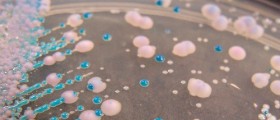

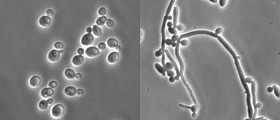




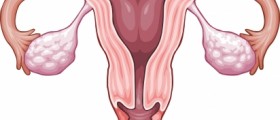


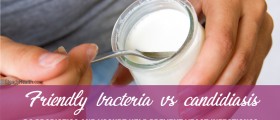




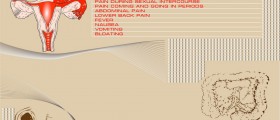







Your thoughts on this
Loading...